Here’s a wrap up of what’s up in the night sky for December 2019.
The space event compilation includes stargazing events and the moon’s phases. Save these dates on your calendar.
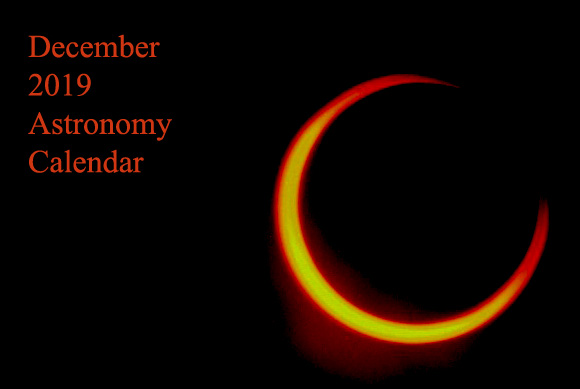
Now enjoy the following celestials events in December 2019:
1. December 8 / overnight / Bright Moon under Uranus
Overnight on Sunday, December 8, the waxing gibbous moon will be positioned a palm’s width below (or 7 degrees to the celestial southeast of) Uranus.
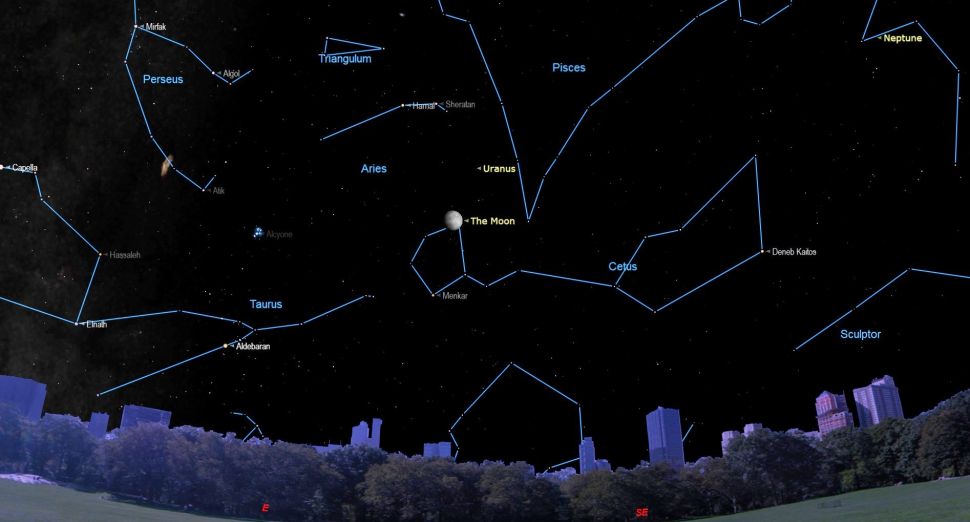
The bright moon’s light will overwhelm the dim planet, but you can note Uranus’ location and view the planet on a night when the moon has left the scene.
2. December 10 / after sunset / Venus Passes Saturn
On the evenings surrounding Tuesday, December 10 the orbital motion of Venus (red curve) will carry it closely past Saturn.
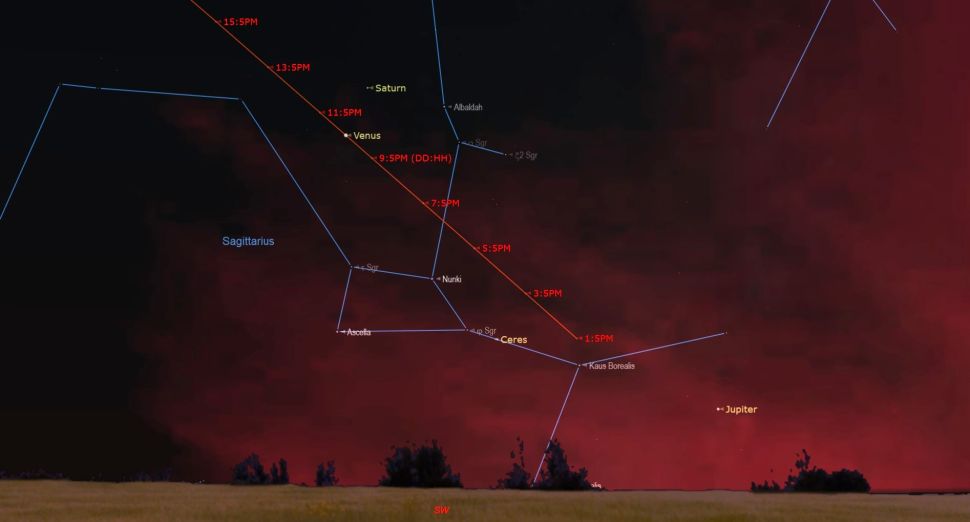
For about an hour after sunset, look low in the southwestern sky for very bright Venus positioned to the lower left (or celestial south) of medium-bright Saturn.
With a separation of less than two finger widths (2 degrees) at closest approach, both planets will appear together in the eyepiece of a backyard telescope at low magnification on Tuesday and Wednesday.
3. December 12 / at 5:12 GMT / Full Oak Moon near Messier 35
The December full moon, traditionally known as the Oak Moon, Cold Moon, Long Nights Moon, and the Moon before Yule, always shines in or near the stars of Taurus.
Since it’s opposite the sun on this day of the lunar month, the moon is fully illuminated and rises at sunset and sets at sunrise.
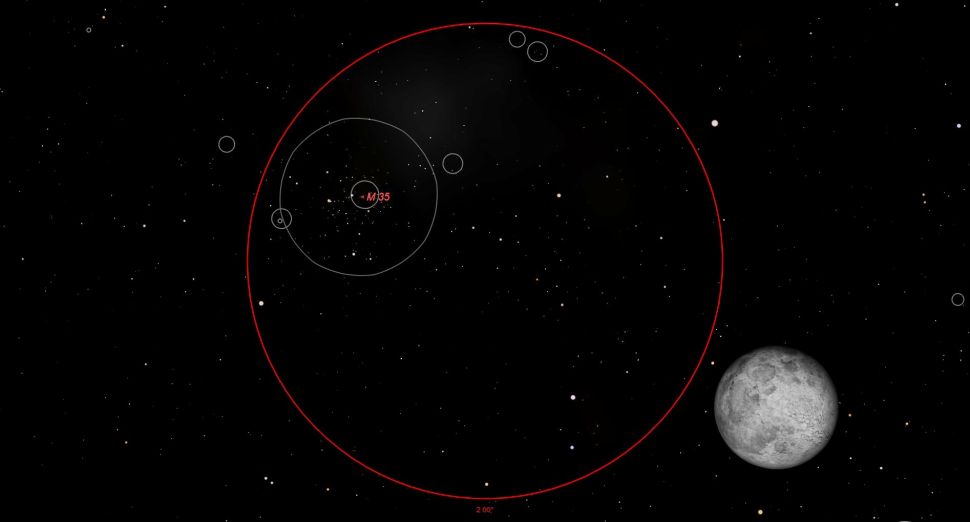
Full moons during the winter months at mid-northern latitudes reach as high in the sky as the summer noonday sun, and cast similar shadows.
On Thursday evening, the full moon will also pass within two finger widths to the lower right (or 2 degrees to the celestial south of the rich, open star cluster Messier 35.
To see that cluster’s stars despite the bright moonlight, position the moon just outside your telescope’s medium-power field of view (red circle).
4. December 13 / all night / Comet PANSTARRS passes NGC 1528
For several nights commencing on Friday, December 13, the path of comet C/2017 T2 (PANSTARRS) is predicted to carry it close to the north of a pair of bright open star clusters designated NGC 1545 and NGC 1528, also collectively named the M & M Double Cluster.
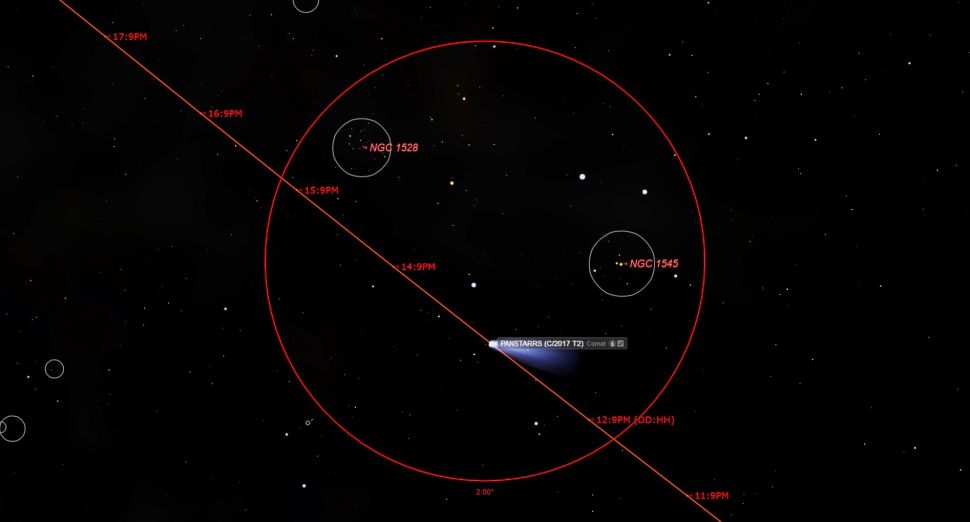
This area of sky will be high in the eastern evening sky near the bright star Capella.
Although it won’t peak in visibility until early 2020, when viewed in a backyard telescope at medium power (red circle), the comet should be bright enough to be seen in December as a dim, greenish fuzzy patch next to the clusters’ stars.
5. December 13-14 / midnight to dawn / Geminids Meteor Shower Peak
The Geminids meteor shower, one of the most spectacular of the year, runs from December 4 to 16 annually.
In 2019, it will peak before dawn on Thursday, December 14, when up to 120 meteors per hour are possible under dark sky conditions.
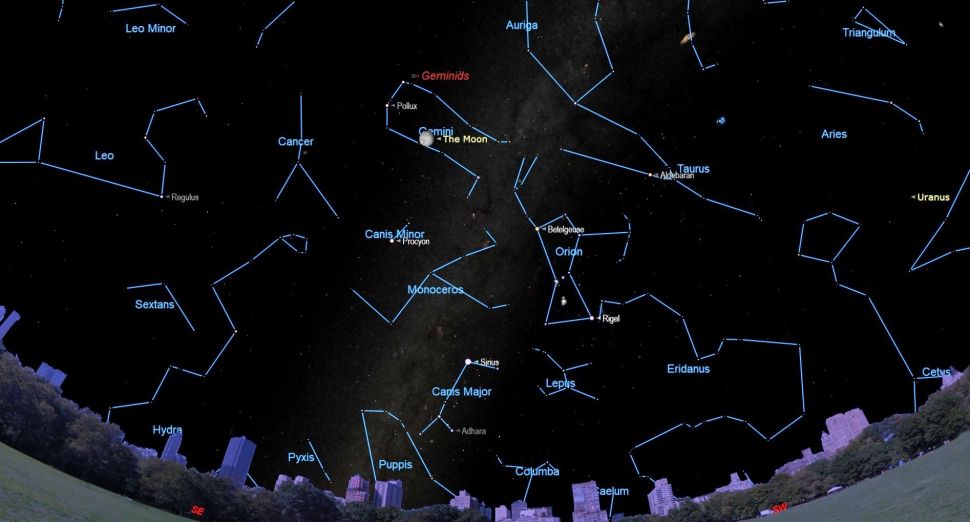
Geminids meteors are often bright, intensely colored, and slower moving than average because they are produced by particles dropped by an asteroid designated 3200 Phaethon.
The best time to watch for Geminids will be from full darkness on Wednesday until dawn on Thursday morning.
At about 2 a.m. local time, the sky overhead will be plowing into the densest part of the debris field.
The full moon in Gemini on the peak night will overwhelm the majority of the meteors for this shower in 2019.
6. December 14 / overnight / Moon Buzzes the Beehive
Overnight on Saturday, December 14, the orbital motion of the waning gibbous moon (green line) will carry it toward the center of the large open star cluster known as the Beehive (and Messier 44) in Cancer.
When Messier 44 becomes high enough to observe (after about 9 p.m. local time), the moon will be sitting less than a fist’s width above (or 8 degrees to the celestial west of) the cluster.

By dawn, the moon will close to within half that distance, and the rotation of the sky will place the moon to the cluster’s lower right.
Observers in Asia and the south Pacific can watch the moon pass through the northern edge of the cluster.
Around midnight local time there, both objects will fit within the field of view of a telescope at low magnification (orange circle), although the bright moonlight will overwhelm the cluster’s dimmer stars.
7. December 19 / 4:57 GMT / Last Quarter Moon
At its last quarter phase, the moon rises around midnight and remains visible in the southern sky all morning.
At this phase, the moon is illuminated on its western side, towards the pre-dawn sun.
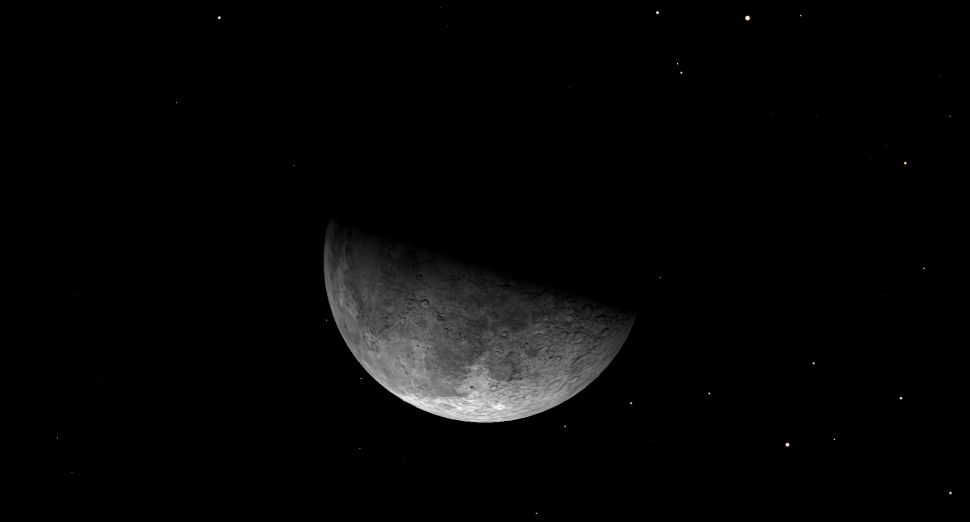
Last quarter moons are positioned ahead of the Earth in our trip around the sun.
About 3½ hours later, Earth will occupy that same location in space.
During the week following this phase, the waning moon will traverse the last quarter of its orbit around the earth, on the way to new moon and leave the evening skies dark for skywatchers worldwide.
8. December 22 / 4:19 GMT / Northern Winter Solstice
On Sunday, December 22 at 04:19 GMT (or Saturday at 11:19 p.m. EST and 8:19 p.m. PST), the sun will reach the solstice.
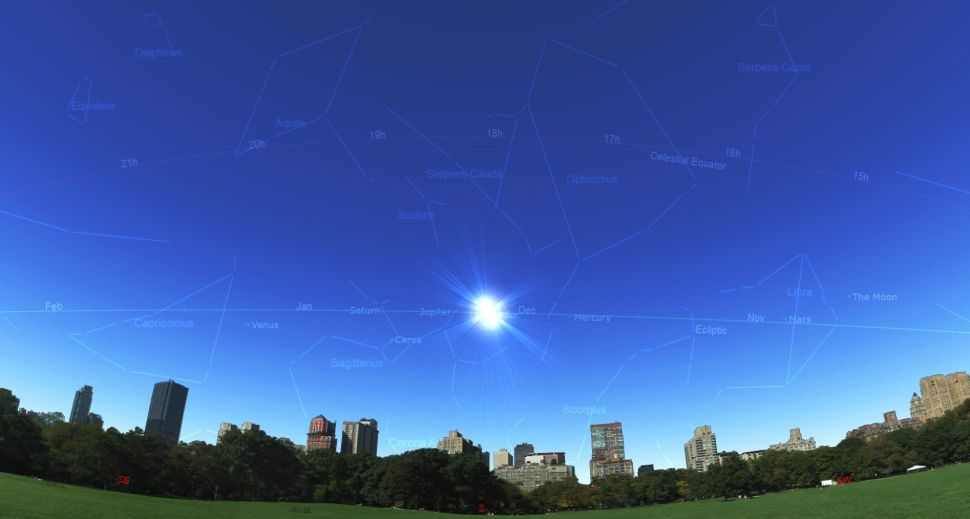
The sun is at its southernmost declination for the year, resulting in the shortest day of the year for the northern hemisphere, and the longest day of the year for the southern hemisphere.
After the solstice, the amount of daylight will increase daily for the Northern Hemisphere.
9. December 23 / pre-dawn / Old Moon Meets Mars
After it rises in the southeastern pre-dawn sky at 5 a.m. local time on Monday, December 23, the very old and slim crescent moon will be positioned a slim palm’s width to the lower left (or 5.5 degrees to the celestial northeast) of reddish Mars.
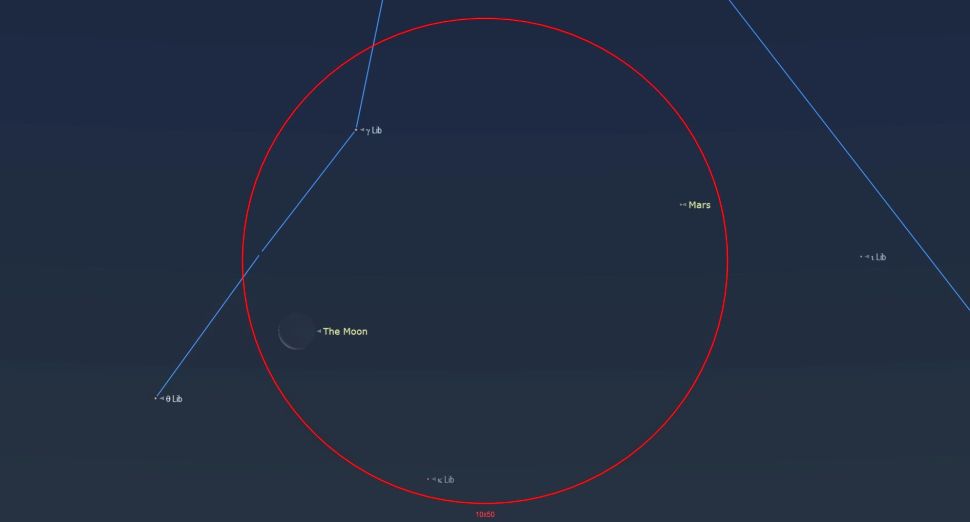
The duo will make a pretty sight in binoculars (red circle) until just before sunrise.
10. December 22-23 / midnight to dawn / Ursids Meteor Shower Peak
The annual Ursids meteor shower, produced by debris dropped by periodic comet 8P/Tuttle, runs from December 17 to 23.
It will peak during the early hours of Saturday, December 22, when seeing up to 20 meteors per hour is possible under dark skies.
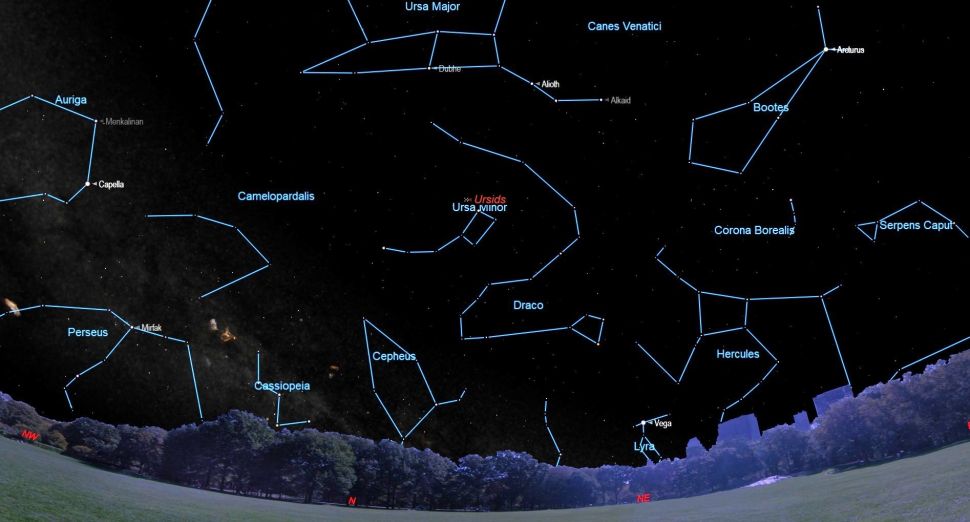
The best time to watch will run from midnight to dawn that morning.
A waning crescent moon on the peak night will provide excellent viewing conditions for Ursids meteor watchers in 2019.
True Ursids will appear to radiate from a position in the sky above the Little Dipper (Ursa Minor) near Polaris, but the meteors can appear anywhere in the sky.
11. December 26 / 5:13 GMT / New Moon and Annular Solar Eclipse
When at its new phase, the moon is travelling between Earth and the sun.
Since sunlight can only reach the side of the moon facing away from Earth, and the moon is in the same region of the sky as the sun, our natural satellite becomes completely hidden from view.
This new moon will occur when the moon is close to its descending node and also approaching apogee — setting up an annular solar eclipse.
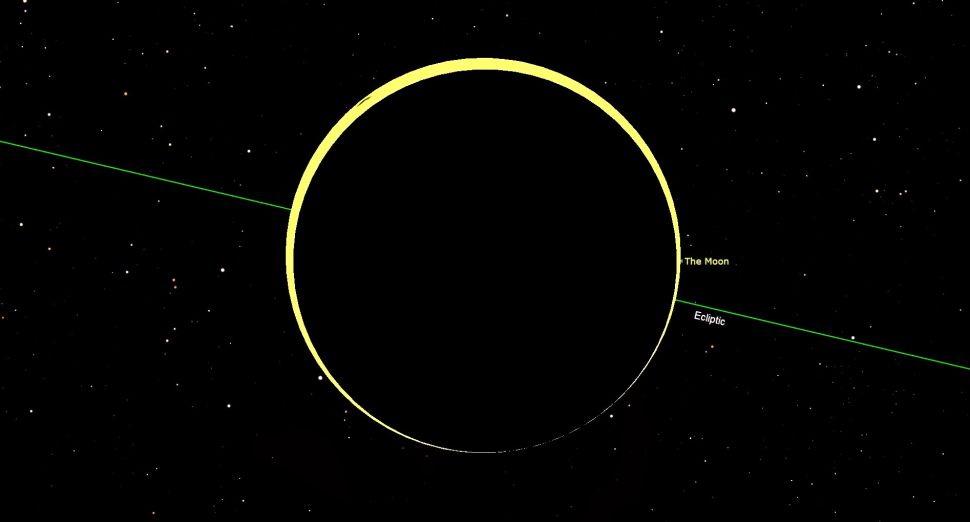
The track for the eclipse will commence near Riyadh, Saudi Arabia, where it will be 96 miles (or 154 km) wide.
The eclipse will sweep southeast across southern India near Kannar (narrowing to 80 miles, or 129 km), cross through Malaysia, the southern Philippines, and Guam, and end in the North Pacific.
A partial eclipse will be visible from southern Russia, down across Asia to northeastern Africa and over to northern Australia.
Maximum eclipse of 94.11% solar disk coverage will occur for 3m39.9s southwest of Singapore starting at 05:24 GMT.
Proper solar filters will be required to view any portion of this eclipse.
12. December 27 / after sunset / Young Moon meets Saturn
In the southwestern sky for a short period after sunset on Friday, December 27, the very young crescent moon will be positioned a slim palm’s width to the upper left (or 5 degrees to the celestial southeast) of Saturn.
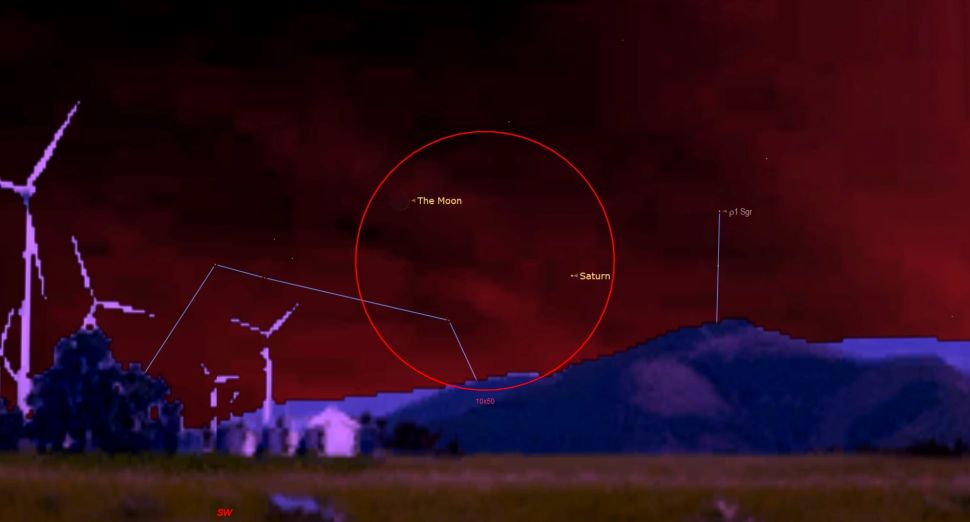
The duo will make a nice sight in binoculars (red circle). But use them only after the sun has completely set.
13. December 28 / early evening /Young Moon near Venus
In the southwestern sky after sunset on Saturday, December 28, the very young sliver of the crescent moon will occupy a position less than 3 finger widths below (or 2.5 degrees to the celestial southwest of) Venus, making a lovely scene in binoculars (red circle).
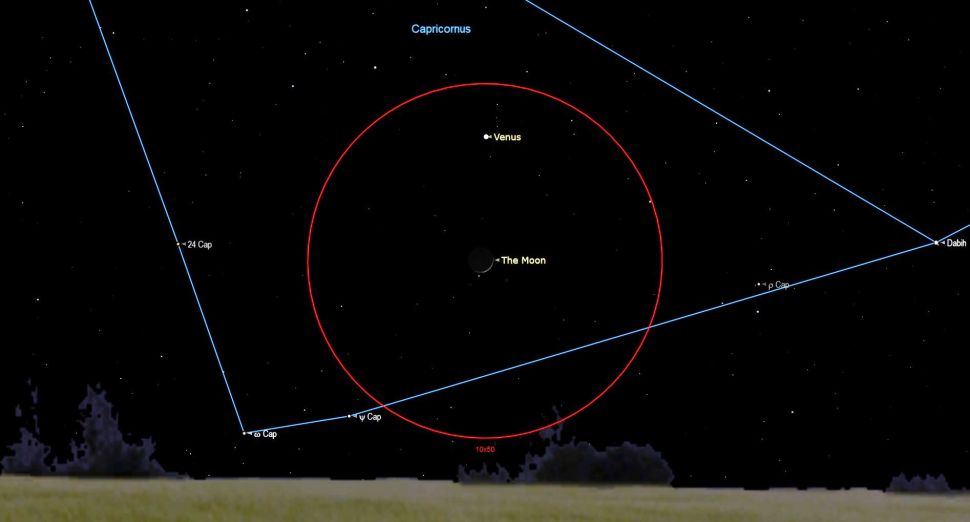
Observers in Antarctica and the southern tip of South America will witness the moon occult Venus.
14. December 30 / 6:38 p.m. EST / Algol at Minimum Brightness
The “Demon Star” Algol in Perseus is among the most accessible variable stars for beginner skywatchers.
Its naked-eye brightness dims noticeably for about 10 hours once every 2 days, 20 hours, and 49 minutes when a small companion star orbiting nearly edge-on to Earth crosses in front of the much brighter main star, dimming their combined light output.
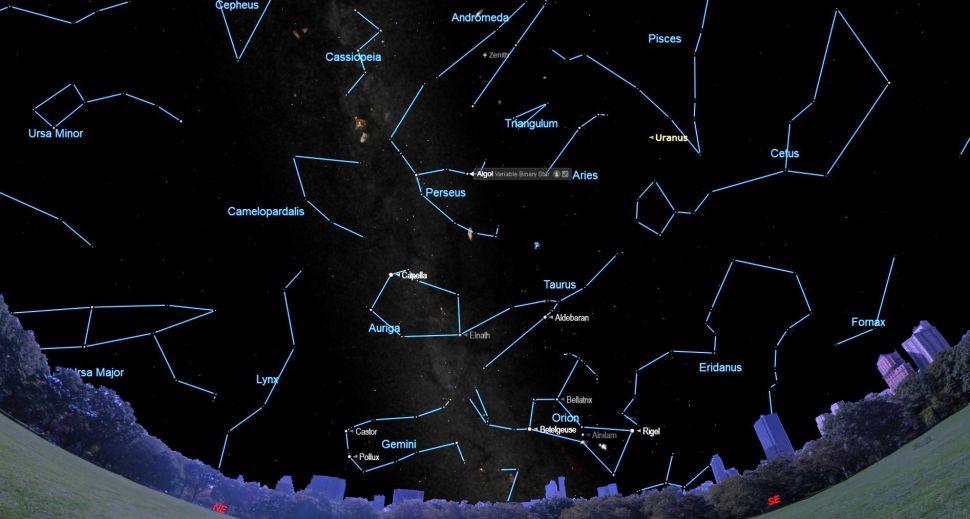
On Monday, December 30 at 6:38 p.m. EST (or 23:38 GMT), Algol will shine at its minimum brightness of magnitude 3.4.
At that time, for observers in the Eastern and Central time zones, the star will sit halfway up the eastern sky.
Five hours later at 11:06 p.m. EST (04:06 GMT on December 31), Algol will be high in the western sky, and it will have brightened to its usual magnitude of 2.1.
Learn more about the 12 meteor showers that will peak in December 19 here.
Enjoy these celestial events and catch you in a few days for more details on the major sky events in December 2019 that are the Geminids, Ursids and the annular solar eclipse.
Follow US on Facebook! Thank you!






[…] If you are looking for more space events in December 2019, look at this great compilation by Meteor Shower Tonight. […]
Comments are closed.